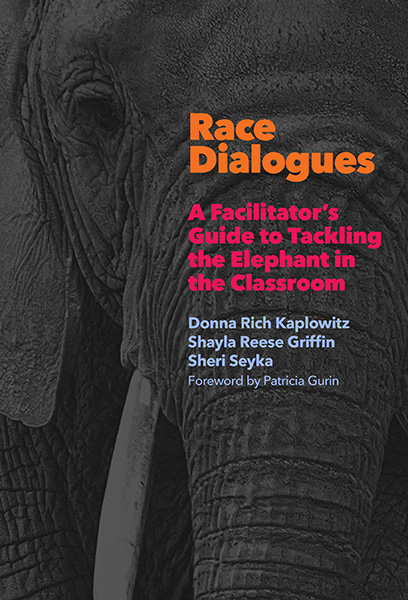reviewed by Bedelia N. Richards – June 8, 2020
 Title: Race Dialogues
Title: Race Dialogues
Author(s): Donna Rich Kaplowitz, Shayla Reese Griffin, & Sheri Seyka
Publisher: Teachers College Press, New York
ISBN: 9780807761304, Pages: 240, Year: 2019
As a college professor and consultant who specializes in teaching others how to engage in or facilitate conversations about race inside and outside the classroom, I find Race Dialogues: A Facilitator’s Guide to Tackling the Elephant in the Classroom to be an essential resource in my tool-kit. Despite empirical evidence of pervasive racial inequality in the United States, White America continues to cling fiercely to an ethic of colorblindness, an ideology that functions to rationalize and perpetuate racial injustice. These issues have become even more visible within the current political climate where President Trump and other leaders have made overtly racist and xenophobic statements, leading to a rise in racially motivated hate crimes on and off college campuses. Thus, the ability to effectively facilitate conversations about race/ism is an urgently needed skill for educators and racial equity consultants. However, the training that K-12 teachers and college professors receive focuses primarily on content knowledge, not on how to deliver this knowledge effectively. The strategies and techniques provided in Race Dialogues can help fill this professional development gap for persons who wish to become better skilled at facilitating conversations about race within multiracial settings.
In Race Dialogues, Kaplowitz, Griffin, and Seyka make a case for using an intergroup dialogue approach for engaging in conversations about race. The primary goal of intergroup dialogue is to address conflicts that emerge between historically antagonistic groups in a way that maintains the dignity of all parties involved. Such an approach entails a specific set of evidence-based practices designed to facilitate conversations between people “who have antagonistic sociohistorical legacies due to unequal social power, stereotypes, implicit and explicit bias, and values” (p.17). The authors convincingly establish their credibility as experts by opening the introduction with a description of their backgrounds as a race scholar who works at a research intensive (R-1) university, a veteran public school teacher, and a racial equity consultant for school districts, respectively. Additionally, the authors present empirically based data published by others and themselves that attest to the effectiveness of the intergroup dialogue approach. Vignettes based on their personal experiences are also useful throughout the book, especially as the authors are honest about when they (or others) have made mistakes, and what to learn from these errors.
Read the full review at Teachers College Record
